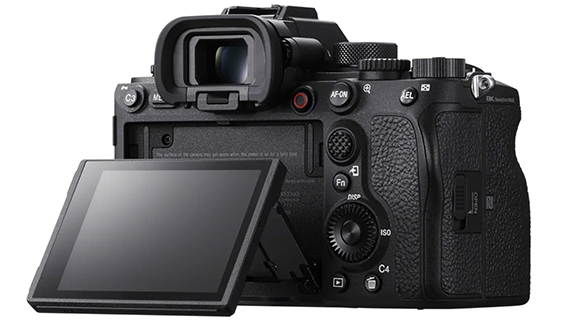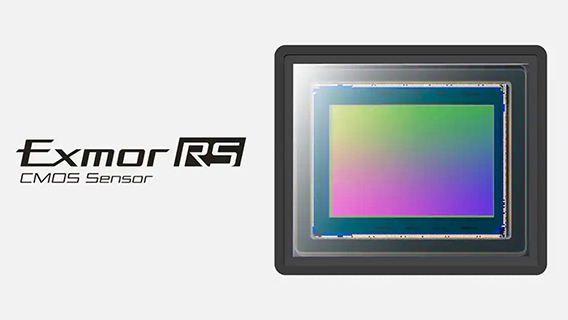Sony A1 – The Lovechild
The rumored, yet surprisingly welcome, Sony A1 has been launched today. I can’t believe that in less than six months after the announcement of the long awaited Sony A7S III model, they would come to the market with such a behemoth of a camera. What’s capturing the eyes of most hybrid shooters these days is the video capabilities in their arsenal. However, the new A1 seems exceptionally capable of delivering on both the video and still front.
 It’s as if the Sony A7R IV with a high-resolution sensor and A7S III with hi-res video had a love child, primarily since both excel in their respected areas. It does seem it inherits more of the A7S-line. For example, the EVF is also using the latest 9.44-million dot screen, but in the case of the A1, it can do a higher 240hz refresh rate compared to the A7S’ 120hz. The AF-system also is that of the A7S III, with 759 phase-detection AF points covering 92% of the sensor.
It’s as if the Sony A7R IV with a high-resolution sensor and A7S III with hi-res video had a love child, primarily since both excel in their respected areas. It does seem it inherits more of the A7S-line. For example, the EVF is also using the latest 9.44-million dot screen, but in the case of the A1, it can do a higher 240hz refresh rate compared to the A7S’ 120hz. The AF-system also is that of the A7S III, with 759 phase-detection AF points covering 92% of the sensor.
The most technologically advanced, innovative camera that Sony has ever released, the Alpha 1 combines high-resolution and high-speed performance at a level that has never been accomplished in the world of digital cameras. ~ Sony
The memory cards are also like that of the A7S III with two multi-slot memory cards that take the newly designed CFexpress Type-A cards and SD UHS-I/II cards. I imagine you’ll be limited (of course) in your video recording capabilities depending on which cards you decide to record on. The Sony menu system reworks found on the new A7S III are also found on the A1, making it more intuitive and pleasing to the eyes when scrolling through your camera’s settings. The inclusion of the full-sized HDMI Type-A connector and the USB-C 3.2 connector allows for 10 Gbps transfer rates and USB Power Delivery charging.

The last thing that cannot be overlooked is the 8k video capability. Not even a year ago, A7S III did receive somewhat of a lackluster reception from reviewers due to its lack of the long-rumored 8K video recording (on even external) for such a video-centered product. Some productions call for an 8K resolution workflow. It also offers versatility and cropping-in without sacrificing much in quality. It can record H.265/XAVC HS at 4:2:0 10-Bit in 24/25/30 fps in-camera and with an external recorder, it can do 16-Bit RAW output. Of course, it includes SLog3 for later color grading.

I can tell that it inherited the A7R IV high-resolution sensor compared to the 12 MP A7S III. Although it does not have the same 61 MP sensor, but 50.1 MP is no pushover when it comes to recording detail. The mechanical shutter is also 10 fps like that of the A7R IV, although it can do electronic at 30 fps with no blackout, similar to the A9 II. To say the least, what an impressive feat it is for showing off the processing power of the BIONZ XR found in the A7S III.. One of the most exciting features added is the “dual-driven” shutter that allows up to 1/400th flash sync.

Sone Alpha Specs:
- New 50.1-megapixel (approx., effective) full-frame stacked Exmor RS™ CMOS image sensor in combination with an upgraded BIONZ XR™ imaging processing engine with eight times more processing power
- Blackout- free continuous shooting at up to 30 frames per second
- Fast sensor readout enables up to 120 AF/AE calculations per second, double the speed of the Alpha 9 II, even during 30fps continuous shooting
Bright and large 0.64-type 9.44 million-dot (approx.) OLED Quad-XGA electronic viewfinder with the world’s first[iv]refresh rate of 240 fps
Silent, vibration-free electronic shutter - World’s first anti-flicker shooting with both mechanical and electronic shutter
- Electronic shutter flash sync[vi] up to 1/200 sec. for the first time in the Alpha series
- World’s fastest mechanical shutter flash sync up to 1/400 sec.
- 8K 30p 10-bit 4:2:0 XAVC HS video recording with 8.6K oversampling for extraordinary detail and resolution, in addition to 4K 120p 10-bit 4:2:2 movie shooting capabilities
- Wide dynamic range of 15 stops for stills and 15+ stops for video
- Improved Real-time Eye AF (autofocus) for humans and animals, and new Real-time Eye AF for birds, as well as Real-time Tracking that automatically maintains accurate focus
- 5-axis optical in-body image stabilization for a 5.5-step shutter speed advantage
S-Cinetone color matrix as seen in FX9 and FX6 to deliver an expressive cinematic look - Professional workflow support with the industry’s fastest[xiii] built-in Wi-Fi, SuperSpeed USB 10Gbps, 1000BASE-T Ethernet, and more
The main competitor I would have to say at the moment is Canon’s R5. It can also record 8k 30p internally, but it also doesn’t need an external recorder for RAW at 30p. It’s well past the 8k start line for several months now and they are coming out with more and more RF glass. One of the biggest hurdles, I think, is the price point. The Sony A1 is at the pre-order price of $6,498, while the Canon R5 is at a more palatable $3899 currently on online retailers that you can pick up right now in-store without having to wait. And as usual, it would be best to wait for hands-on reviewers to put the camera through its paces. One of the main gripes with high-resolution video recording in such a small body is overheating. And I think the price tag of the Sony is reflective of that given the heat dissipation design.
Who do you think this camera is for? Well, I would say for those who genuinely want the best of both worlds in one body rather than always carry two cameras with double the equipment—especially those who have previously invested in Sony lenses, lighting and ecosystem. As I always say, the more competition in the market, the better. Because at the end of the day, it’s the consumer that stands to win.
Written by Jesus Gomez-Cortes – Shoot The Centerfold
© 2010-2021 Copyright ShootTheCenterfold.com. All rights reserved.
























